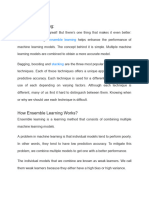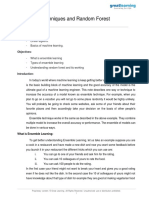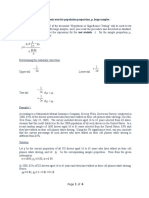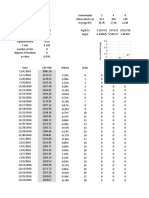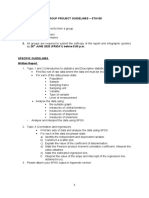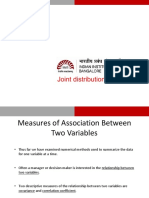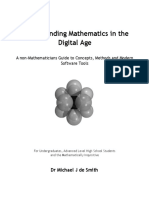0% found this document useful (0 votes)
36 views15 pagesEnsemble Learning in Machine Learning
The document discusses ensemble learning in machine learning, focusing on three main techniques: bagging, boosting, and stacking. Each technique has its unique purpose, with bagging reducing variance, boosting reducing bias, and stacking improving overall accuracy by combining strong learners. Understanding these methods is essential for enhancing model performance and making informed choices in machine learning applications.
Uploaded by
Sakthi VelCopyright
© © All Rights Reserved
We take content rights seriously. If you suspect this is your content, claim it here.
Available Formats
Download as DOCX, PDF, TXT or read online on Scribd
0% found this document useful (0 votes)
36 views15 pagesEnsemble Learning in Machine Learning
The document discusses ensemble learning in machine learning, focusing on three main techniques: bagging, boosting, and stacking. Each technique has its unique purpose, with bagging reducing variance, boosting reducing bias, and stacking improving overall accuracy by combining strong learners. Understanding these methods is essential for enhancing model performance and making informed choices in machine learning applications.
Uploaded by
Sakthi VelCopyright
© © All Rights Reserved
We take content rights seriously. If you suspect this is your content, claim it here.
Available Formats
Download as DOCX, PDF, TXT or read online on Scribd
/ 15

